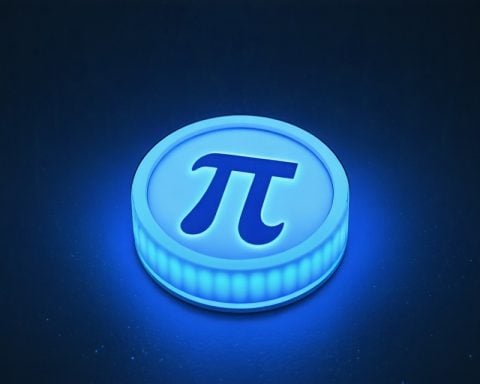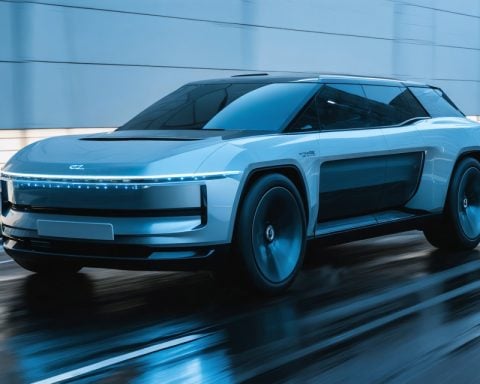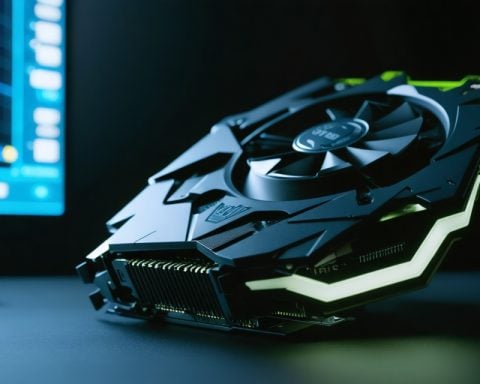- Mercedes-Benz advances electric mobility with a revolutionary solid-state battery, transitioning it from labs to roads in a modified EQS.
- Developed in partnership with Factorial Energy, the Solstice battery uses a safer, more efficient sulfide-based solid electrolyte.
- The battery boasts an impressive energy density of 450 Wh/kg, potentially delivering over 621 miles of range—80% more than current lithium-ion batteries.
- Collaborating with Mercedes AMG High-Performance Powertrains, this innovation could redefine long-distance electric driving and eliminate “range anxiety.”
- Other automakers, including Hyundai, Honda, and Stellantis, aim to introduce solid-state batteries by 2030, fueling industry competition.
- The advent of solid-state technology signals a new era of enhanced range, safety, and efficiency in electric vehicles.
Mercedes-Benz has revved up the electric vehicle landscape, moving its cutting-edge solid-state battery from theoretical dream to tangible reality. A modified EQS is now hitting the roads, equipped with a revolutionary lithium-metal solid-state battery developed in partnership with Factorial Energy, a US-based innovator in the field.
These on-road experiments follow rigorous lab tests, culminating in this extraordinary step forward for electric mobility. Mercedes-Benz collaborated with its Formula 1 powerhouse, Mercedes AMG High-Performance Powertrains, to engineer a battery that promises not just incremental improvements but transformative change.
The tech at the heart of this breakthrough is the Solstice battery, featuring a sulfide-based solid electrolyte that’s both safer and more efficient than previous solutions. With a stunning energy density of 450 Wh/kg, the Solstice battery aims to deliver a driving range exceeding 621 miles—up to 80% more than today’s lithium-ion models. This leap forward could redefine long-distance electric driving, making “range anxiety” a thing of the past.
Mercedes isn’t alone in this electrifying race. Rival automakers like Hyundai, Honda, and Stellantis are also journeying down the solid-state path, aiming to roll out their next-gen batteries by 2030. The potential to produce batteries that are 40% lighter with 33% less volume ignites a fiercely competitive landscape.
Beyond Mercedes’ milestone, it’s a signal to the industry: the era of solid-state batteries is dawning. While the question of who will dominate this new frontier remains, the promise of enhanced range, safety, and efficiency is undeniable. As the finish line approaches, who will cross first is anyone’s guess, but the race itself is captivating to witness.
Revolutionizing Electric Vehicles: How Mercedes’ Solid-State Battery Changes the Game
Real-World Use Cases and Market Impact
Mercedes-Benz’s feat of incorporating a lithium-metal solid-state battery into its EQS model signifies a pivotal moment for the automotive industry. The astonishing energy density and increased driving range provided by the Solstice battery—over 621 miles—address one of the largest impediments to electric vehicle adoption: range anxiety. This improvement could expand the use of electric vehicles in long-distance travel and commercial fleets, providing businesses and consumers with more reliable options.
Real-World Applications:
– Long-Distance Travel: With the potential to travel over 621 miles on a single charge, electric vehicles can rival and even surpass conventional gas-powered cars for road trips.
– Commercial Use: Delivery services and logistics companies may find these vehicles ideal for operations, as downtime for battery recharging is minimized.
– Urban Mobility: City planning could shift towards supporting infrastructure for these longer-range EVs, reducing the need for frequent high-power charging stations.
Industry Trends and Market Forecasts
The competitive landscape is rapidly evolving, with traditional automakers and new entrants like Hyundai, Honda, and Stellantis investing heavily in solid-state technology.
Key Market Trends:
– Rapid Development: Major automakers aim to mass-produce solid-state batteries by 2030, suggesting an industry-wide shift.
– Investment Surge: Automotive and tech companies are investing in startups specializing in solid-state technology, signaling confidence in the technology’s future.
– Partnerships and Collaborations: Cross-industry partnerships, similar to Mercedes’ collaboration with Formula 1 experts, are becoming common to leverage existing expertise and accelerate innovation.
Controversies and Limitations
While promising, solid-state battery technology is not without its challenges.
– High Production Costs: Current manufacturing processes for solid-state batteries are costly, making them more expensive than traditional lithium-ion batteries. Scaling up production to reduce costs is critical.
– Durability and Lifecycle: Longevity of solid-state cells under diverse environmental conditions remains a concern. Further testing is required to ensure consistent performance.
– Material Scarcity: Securing sustainable sources of lithium metal and other materials used in solid-state batteries could become challenging.
Pros and Cons Overview
Pros:
– Higher Energy Density: Provides significantly longer range, diminishing range anxiety.
– Improved Safety: Solid electrolytes are less prone to flammability and leakage compared to liquid electrolytes.
– Weight and Volume Reduction: Potentially lighter and more compact, improving vehicle efficiency and design.
Cons:
– Cost: Currently higher than traditional lithium-ion solutions.
– Scalability: Manufacturing technology is still being developed to meet large-scale needs.
– Material Challenges: Availability and sustainability of core materials.
Actionable Recommendations
For consumers and industry stakeholders looking to leverage solid-state technology, here are a few quick tips:
– Stay Informed: Keep abreast of developments from companies such as Mercedes-Benz, Hyundai, and Stellantis. Follow industry news articles and press releases for the latest updates.
– Electric Infrastructure: Cities and businesses should consider investing in infrastructure that supports longer-range EVs to capitalize on less frequent recharging needs.
– Investment Opportunities: For investors, companies pioneering in solid-state technology offer potential growth opportunities as the market expands.
Conclusion
With the dawn of the solid-state battery era, the electric vehicle industry is poised for transformative change. While challenges remain, the advancements promised by companies like Mercedes-Benz could soon make long-standing issues such as range anxiety a relic of the past.
For more information about cutting-edge automotive innovations, visit the official website of Mercedes-Benz.



















